Column by Mahfuz Anam: Mindless killing changed everything

The prime minister and several ministers keep on asking: since the quota reform has already been implemented, why are the students still demonstrating? The repetition of this question only proves how blind to facts and disconnected with the people the government and Awami League leaders are. They are denying or seem to be oblivious to the fact that over 200 killed—the government itself admits to 150—and thousands injured by the indiscriminate firing by the police and Border Guard Bangladesh (BGB) has totally changed the situation. In one eye hospital in Dhaka, during the violence, nearly 400 people who sustained eye injuries were treated, 300 of whom had to be admitted, and 250 had to undergo eye surgery. The majority of them had pellet (a particular type of ammunition used by police during the recent violence) wounds in one or both eyes. Imagine what the total figure could be like. We have no count yet of how many will have to amputate one or both arms or legs due to gunshots, and how many more will have to be operated upon. How many will really return to normal life? Everything points to mindless violence that cannot be termed as police action to quell unrest that emanates from usual demonstrations in our part of the world. The evidence is of a mindset of "shoot at sight," as announced by an AL leader.
Today's issue is seeking justice. Justice for the massacre of students and other citizens, the unleashing of a killing machine that the police and BGB turned out to be, the large-scale arrests, the "block raids," the house-to-house search, the false cases, and the insults of terming the demonstrators in general to be agents of destruction and anti-Bangladesh forces.
The all-encompassing issue that has alienated the students and enraged the people is the atmosphere of fear under which all students, youth, politically involved citizens, and people in general are having to live. (A father called this author and said, "I have a school-going son. I become tense with every sound of a car stopping near my house at night".)
The killings definitely stand as the most brutal retaliation by a government on any civic movement in the post-liberation Bangladesh history—and may be that of the subcontinent. We shudder at the thought of how a civilian government could allow its law enforcers to attack its own people with such brutality. The killing was not just an event, but one that took place over several days. Wasn't there any reflection, any afterthought and reassessment at the end of the first, second or third day that such heartless and continuous killing of one's own people must stop?
What brought the party that led us during the Liberation War to this? Over 15 years of unaccountable power, greed, cronyism, wealth accumulation, abuse of authority, and the attitude that they are above the law.
Of all the deaths, the most heart-rending is perhaps the story of Riya Gope, a six-year-old in Nayamati, Narayanganj, who was playing on the rooftop of their four-storey building. On July 19 afternoon, when police started firing on the demonstrators on the street near her house, her father Dipak Kumar Gope rushed to the roof to get her; he was carrying his daughter back to their flat when a bullet struck the child's head. She died at the Dhaka Medical College Hospital (DMCH) on July 25. How could a bullet hit someone on the roof of a four-storey building unless the police took an aim to do so? Was Riya a threat? The explanation will most likely be that it was an accident. But can that be acceptable when she was in her father's arms on the roof of a four-storey building?
Use of helicopters to fire sound grenades and tear gas shells is a new element we saw in crowd-handling by the law enforcers this time around. However, there are disturbing accounts from the public, reporters and especially photographers that rifle shots were fired from these helicopters upon demonstrating crowds. On July 18 and 19, around mid-morning, helicopters hovered over Mayor Hanif Flyover, Shanir Akhra, Kajla and Signboard areas, sometimes sweeping down as they flew and fired on the crowd gathered below. These helicopters were clearly marked with the insignia of our law enforcers.
The case of Sumaiya Akter in Narayanganj adds credibility to this claim. She was 20 years old and the mother of a healthy two-month-old daughter. Hearing the sound of the helicopter and that of the clashes going on outside, following her mother, Sumaiya ventured out to the veranda of her sixth floor apartment to see what was going on. She got hit by a live bullet and died soon after. Where could the bullet come from? Given the height and the location of the apartment, the most likely possibility is that the shot came from a helicopter, as claimed by her family. This gives substance to claims by many others that they saw gunshots coming from helicopters.
How can a protesting crowd be fired upon from the air by their own government? Firing from helicopters is known to occur only when operating in an "enemy" territory or a location captured by armed terrorists. How can our own BGB or Rab or police fire upon our own people in such a manner?
We demand a credible and thorough investigation on the use of helicopters and their firing on demonstrators. While the judicial investigation to probe all deaths should continue, a separate and fast-track probe must be conducted to reveal the truth on this specific matter.
It must also be investigated as to what led to such a large-scale killing in the hands of law enforcers. Who made the threat assessment, and how? At what stage were they allowed to open fire on demonstrators, and who gave the orders to shoot? The rifles used were all modern and sophisticated. BGB used weapons meant to protect our borders. How could they be allowed to tackle student demonstrators with the same weapons? The investigation should also consider whether or not excessive force and disproportionate firepower were used against the demonstrators, none of whom have so far been seen to carry firearms. They were all carrying sticks and iron rods.
It is our considered view that the government and the ruling party continue to live in their own bubble and underestimate the depth of the people's grievances that has resulted from the killings of students and the public. We also feel that peace will not return to the campuses and the streets until justice is done and convincingly seen to be done. Force can be used to "calm" the situation, but it will be temporary. The lengthier the period of uncertainty, the more grievous will be its impact on our economy and the country's international acceptability.
Those who are used to using power to get their way are usually not aware of its limits. We have used Ansar, police, Rab, BGB and even the army, and an extreme measure like curfew. What has been the result? Yes, brutality, death, arrests and harassment can be further ratcheted up. But all that will generate more resentment, deeper hatred, and critical desperation. Such use of force may, at best, show a superficial show of calm, but will never solve our real problem of "power corrupting and absolute power corrupting absolutely" (adopting Lord Acton's time-honoured observation).
We urge the government to no longer hide behind convenient narratives that stand totally contradicted by facts. We further urge them to examine the brutality with which the demonstrators have been treated and the death and injuries that ordinary students and the people have had to suffer, and respond to the call for justice. We also urge them to stop befooling themselves as facts are in people's hands due to modern technology. Yes, there could be a lot of false news and videos in the digital sphere. But there are many credible ones too. Wisdom should compel the government not to brush them aside, which it will do only at its own peril.
Mahfuz Anam is the editor and publisher of The Daily Star.
Follow The Daily Star Opinion on Facebook for the latest opinions, commentaries and analyses by experts and professionals. To contribute your article or letter to The Daily Star Opinion, see our guideline for submission.

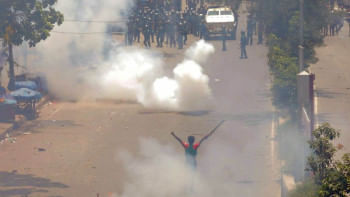
 For all latest news, follow The Daily Star's Google News channel.
For all latest news, follow The Daily Star's Google News channel. 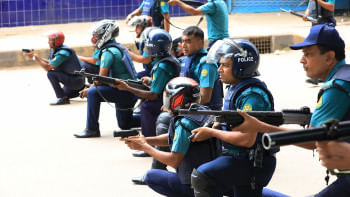
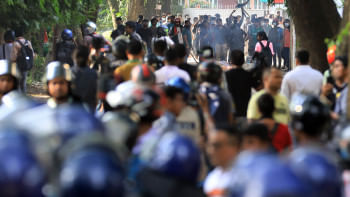



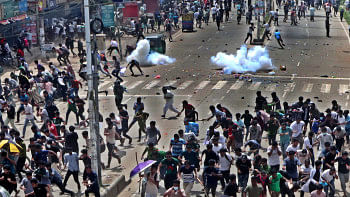





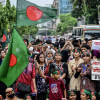



Comments